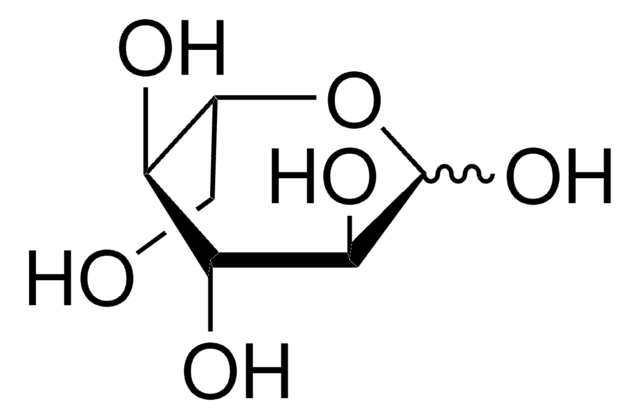G8644
D-(+)-Glucose solution
100 g/L in H2O, sterile-filtered, BioXtra, suitable for cell culture
Synonym(s):
D-Glucopyranose
About This Item
Recommended Products
sterility
sterile-filtered
product line
BioXtra
form
solution
concentration
100 g/L in H2O
technique(s)
cell culture | mammalian: suitable
impurities
endotoxin, tested
storage temp.
room temp
SMILES string
OC[C@H]1O[C@H](O)[C@H](O)[C@@H](O)[C@@H]1O
InChI
1S/C6H12O6/c7-1-2-3(8)4(9)5(10)6(11)12-2/h2-11H,1H2/t2-,3-,4+,5-,6+/m1/s1
InChI key
WQZGKKKJIJFFOK-DVKNGEFBSA-N
Gene Information
human ... PYGM(5837)
Looking for similar products? Visit Product Comparison Guide
General description
Application
- to determine extracellular acidification rate (ECAR) or oxygen consumption rate (OCR) in human CB CD34+cells by Seahorse extracellular flux assay
- as a negative control in human umbilical vein endothelial cell (HUVEC) culture
- as a supplement for culturing colonic biopsies
Biochem/physiol Actions
Other Notes
This solution has been sterilized by filtration.
Storage Class Code
12 - Non Combustible Liquids
WGK
nwg
Flash Point(F)
Not applicable
Flash Point(C)
Not applicable
Certificates of Analysis (COA)
Search for Certificates of Analysis (COA) by entering the products Lot/Batch Number. Lot and Batch Numbers can be found on a product’s label following the words ‘Lot’ or ‘Batch’.
Already Own This Product?
Find documentation for the products that you have recently purchased in the Document Library.
Customers Also Viewed
Our team of scientists has experience in all areas of research including Life Science, Material Science, Chemical Synthesis, Chromatography, Analytical and many others.
Contact Technical Service





